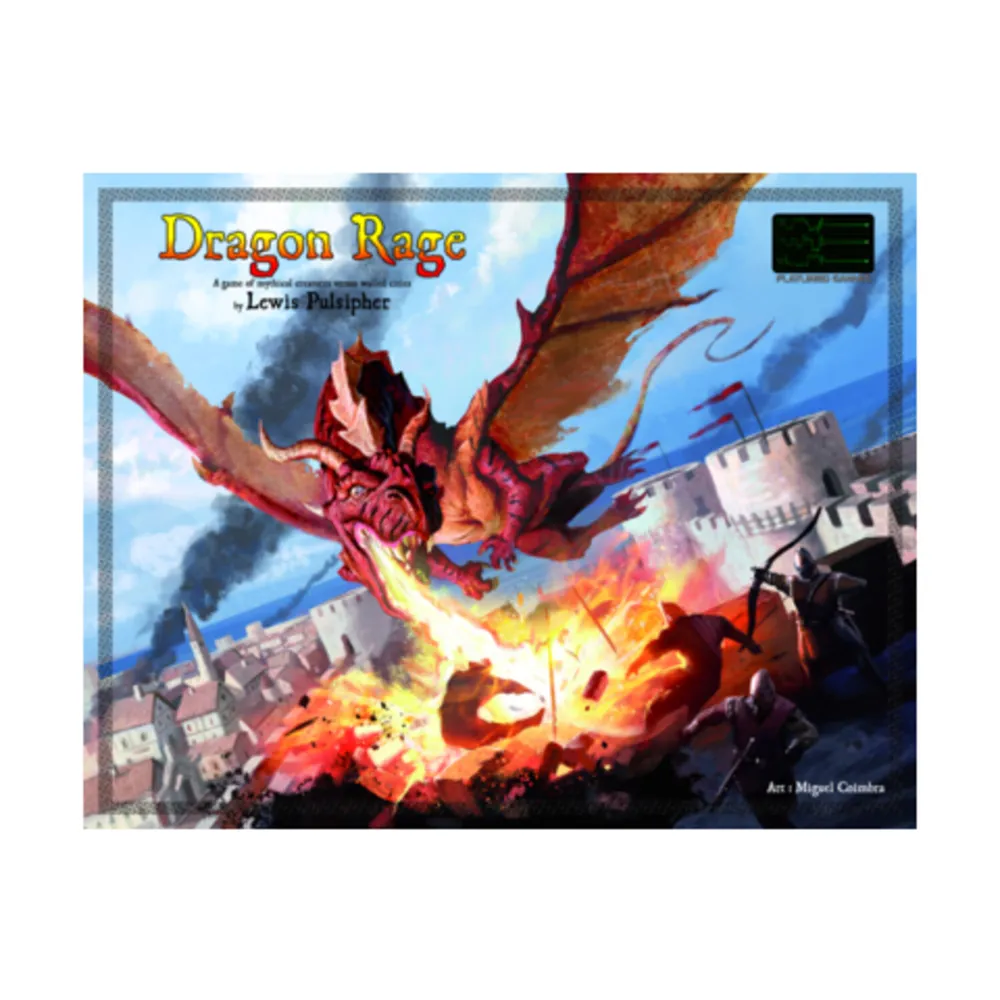Dragon Rage (1982)
Dragon Rage
Dragon Rage is a board game that was first published in 1982 by Heritage/Dwarfstar. The game is set in a medieval city that is being attacked by mythical creatures such as dragons, giants, goblins, and orcs. The game board is a full-color aerial view of the city and its surrounding areas.
Why is Dragon Rage Popular?
Dragon Rage is a popular game due to its unique theme and Gameplay Mechanics of Dragon Rage. The game is significant because it was one of the first board games to feature a point-buy system and campaign rules.
Game Components of Dragon Rage
How To Setup Dragon Rage
To set up Dragon Rage, players begin by placing the appropriate side of the double-sided game board, either the walled city of Esirien or the Orc oppidum of Nurkott. Each player then deploys their units according to the scenario rules. For the basic scenario, two Dragons attack Esirien, while the defender sets up a small militia within the city walls. The game also includes setup instructions for other scenarios and optional rules.
Gameplay Mechanics and Game Objective
Player Experience
Dragon Rage offers a tactical and engaging experience with a mix of strategy and luck. The game’s design ensures that each turn feels significant, with the possibility of sudden death endings and thematic victory conditions like “dragon whelp” or “the death from above.” The game is relatively quick, lasting around 90 minutes, including teaching time. The visual aesthetics are enhanced with linen-finish tiles, large reference cards, and high-quality counters, although some players find the map overly busy.
Pros
Cons
Personal Thoughts on Dragon Rage
Dragon Rage is an excellent choice for those looking to dive into the world of wargames, especially those with a fantasy theme. It’s designed to be accessible yet challenging, making it suitable for both new and experienced players. The game’s theme and mechanics, such as the detailed dragon body parts and the use of magic, add a layer of excitement and strategy that keeps players engaged. However, players who dislike significant luck factors in their games might find this less appealing.
We are supported by our audience. When you purchase through links on our site, we may earn an affiliate commission, at no extra cost for you. Learn more.

